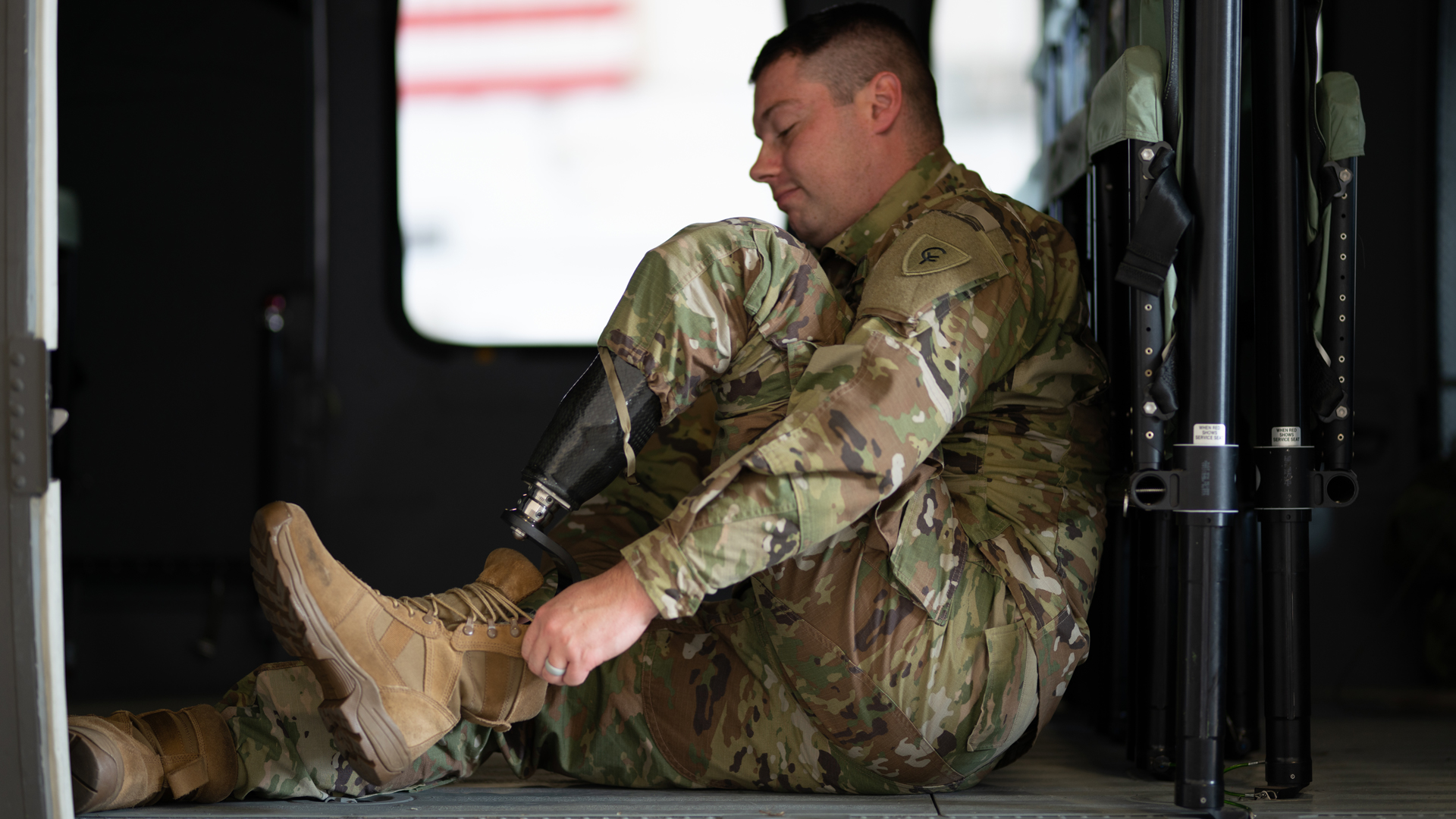

From the very cringe to the very meaningful, tattoos have a special place in the military. Now, a policy at the Walter Reed National Military Medical Center will help ensure wounded service members don’t have to part with the beloved tats they got during their time in uniform.
“[O]ur general policy is that if you had a tattoo before you lost your limb and you would like the same tattoo on your prosthetic/artificial limb cover, then we will try to make this happen, depending on available resources,” said Dr. Paul Paqsquina, chief of rehabilitation at Walter Reed National Military Medical Center. It’s unclear how long the program has been available for service members receiving treatment at Walter Reed.
Subscribe to Task & Purpose Today. Get the latest in military news, entertainment, and gear in your inbox daily.

Tattoos and troops are one of the world’s more storied love affairs. Celebrated by young soldiers and at times begrudged by senior leaders, service member tattoos can range from absolutely outrageous to sentimental, providing an opportunity to memorialize fallen brothers or sisters. If nothing else, they often represent a memory, person, or place that was important enough that the service member wanted to keep it with them forever.
And losing a limb in service to their country shouldn’t take that away. More than 1,500 service members lost limbs during the wars in Iraq and Afghanistan, according to the Department of Defense. And Paqsquina says that of those, a “high percentage” has lost more than one limb. While the first step is saving a service member’s life, according to Paqsquina, “the next step is restoring lives, and providing some meaning to those lives.”
The program to recreate service members’ tattoos is an attempt to “do whatever we can to make our nation’s heroes ‘whole’ after the sacrifices they made,” Paqsquina said, adding that its most important benefit is that troops are “proud and happy” to show off their prosthesis to friends and family.

“This hopefully helps their self-confidence,” he said, “encourages them to avoid isolation, provides an ice-breaker for meaningful conversations with people they meet for the first time, and gives the public a greater sense of the sacrifices made by our service members and the challenges faced by individuals with disabilities across the country and globe.”
Have you had a tattoo recreated on your prosthesis? If so, we’d love to hear from you at haley@taskandpurpose.com.
The latest on Task & Purpose
- Navy fires nuclear submarine captain after only 8 months on the job
- Which Marine Corps boot camp is tougher? This Marine experienced both
- Air Force relieves medical squadron commander after barely a year on the job
- Airmen acted on ‘gut feeling’ when they rescued 8 people from a circling bull shark
- The Army may ditch alcohol restrictions for soldiers in the barracks
Want to write for Task & Purpose? Click here. Or check out the latest stories on our homepage.
